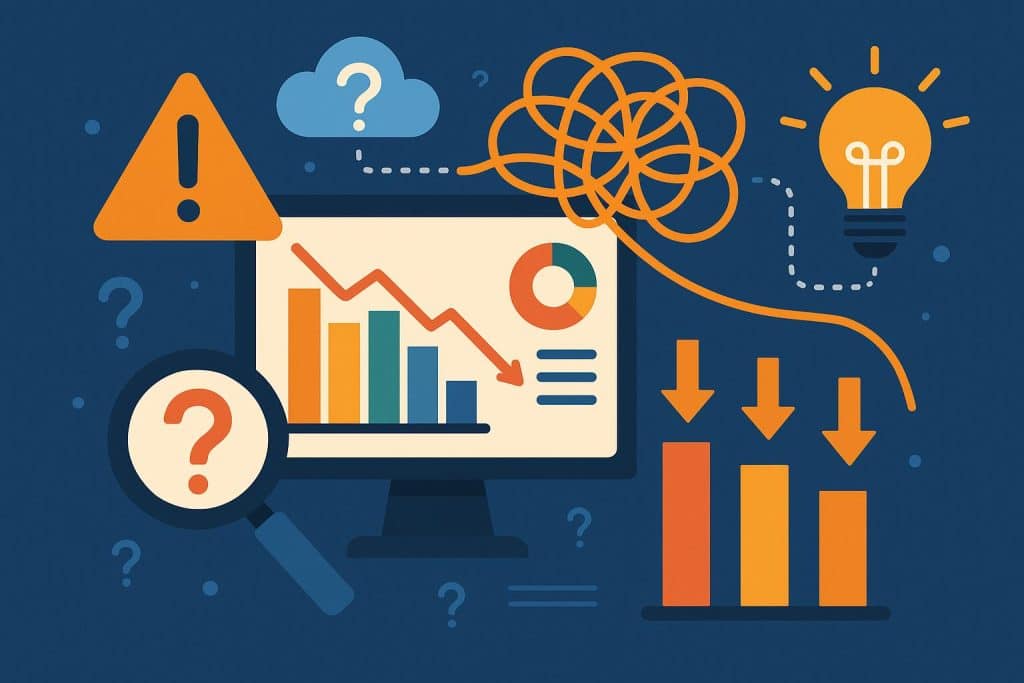Marketing analytics has become the backbone of modern decision-making. Yet, even with advanced tools and platforms, many businesses struggle to get accurate, actionable insights from their data. From fragmented sources to human errors, these challenges can slow down campaigns and reduce ROI.
In this article, we’ll explore the top five challenges in marketing analytics, and more importantly, how to solve them.
1. Data Silos Across Platforms
The Problem:
Marketers often run campaigns across Google Ads, Meta, TikTok, LinkedIn, and other platforms. Each tool generates its own reports, leading to isolated data sets that don’t communicate with one another.
The Solution:
Break down silos with integrations that centralize data in one place. Tools designed for streamlining marketing analytics can pull metrics from multiple platforms into a single dashboard, allowing cross-channel comparisons and unified insights.
2. Cross-Platform Attribution
The Problem:
Which ad deserves credit for a sale? Was it the Google search click, the Instagram story, or the email follow-up? Attribution remains one of the hardest parts of marketing analytics.
The Solution:
Instead of relying on platform-specific attribution models, marketers should blend data into a shared reporting system. Advanced connectors and visualization tools make it easier to track customer journeys holistically, offering a more accurate picture of ROI.
3. Manual Errors in Reporting
The Problem:
Copying and pasting data into spreadsheets is still common practice. But manual processes are prone to errors, from misaligned columns to wrong formulas, leading to inaccurate reports that can misguide strategy.
The Solution:
Automating data imports through API connections ensures clean, consistent numbers. Platforms like Dataslayer for marketing analytics directly fetch data from ad platforms, eliminating human mistakes while saving countless hours.
4. Time-Consuming Reporting Cycles
The Problem:
Marketing teams often spend days pulling numbers, updating charts, and formatting reports for stakeholders. By the time reports are delivered, the data may already be outdated.
The Solution:
Automated scheduling and refresh features can update dashboards daily, or even hourly, so marketers spend time analyzing insights, not preparing slides. This allows faster, more agile decision-making.
5. Making Data Actionable
The Problem:
Even when data is collected and presented correctly, many teams struggle to turn numbers into action. Reports can feel like a rear-view mirror rather than a roadmap.
The Solution:
Adding AI forecasting, trend detection, and visualization helps bridge the gap between insight and execution. Predictive analytics can flag opportunities or risks before they surface, empowering teams to act proactively.
How Dataslayer Helps Overcome These Challenges
For marketers looking to modernize their approach, Dataslayer for marketing analytics offers a practical solution. By connecting advertising and analytics platforms directly to destinations like Google Sheets, Looker Studio, BigQuery, and Power BI, Dataslayer:
- Consolidates data across multiple platforms.
- Automates reporting to cut down manual effort.
- Supports attribution analysis with blended data views.
- Reduces errors through direct API pulls.
- Provides predictive insights with AI-powered forecasting.
Whether you’re managing a single brand or dozens of client accounts, Dataslayer simplifies the reporting workflow and enables smarter, faster decisions.
Final Thoughts
The future of marketing depends on overcoming today’s data challenges. Businesses that continue relying on manual reporting and fragmented systems will always be a step behind.
By embracing automation and adopting tools for streamlining marketing analytics, marketers can unlock cleaner data, clearer insights, and more time to focus on strategy. Platforms like Dataslayer for marketing analytics make it possible to leave behind inefficiency and move toward a future of smarter, more reliable reporting.
